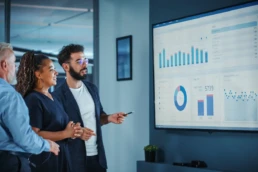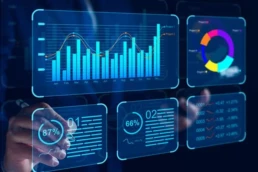44% of retailers say their margins are negatively affected by handling returns, and 37% of companies cited software as the main impediment in handling Reverse Logistics.
Reverse Logistics is not just about the part or the product coming back. There are so many other facets that touch the Reverse Logistics Life Cycle, and organizations are looking at different software, platforms, and tools to make the reverse logistics process a less costly exercise without compromising customer experience.
The Reverse Logistics life cycle has two critical aspects – one is the customer experience, which cannot be compromised, and the other is the cost aspect, which is a necessary evil that must be considered. Organizations will be better served if they accord high priority to getting into the Reverse Logistics life cycle as early as possible as they can effectively address the crucial 4Cs – Cost Avoidance, Cost Reduction, and Cost Elimination, and Improved Customer Experience.
Reverse Logistics Challenges
The challenges of integrating the right digital solutions lie in understanding the data roadblocks. Business data and information move from system to system through various process subsets, often leaving it fragmented and at times inaccurate. Organizations have scattered data residing in enterprise resource planning (ERP) systems, customer relationship management (CRM) systems, warehouse management systems, etc and all these data need to be integrated across the entire value chain to extract its actual value.
Let us take a look at the various reverse logistics challenges that crop up at each stage of the Reverse Logistics life cycle:

At the end of the day, the onus is on decision-makers to look at their data and translate it into actionable business insights. Consolidating data on these points across the Reverse Logistics life cycle and making it visible will drive the clearest path to a solution.
Digital Technologies that can Impact Reverse Logistics Process
Different stakeholders in the Reverse Logistics process need digital solutions to deliver on points that matter to them. From a customer’s point of view, predictability and visibility of Reverse Logistics Process are essential. Similarly, for a field technician, coordination of product tracking and customer experience is vital, while for an operation manager, service-level agreement (SLA) adherence holds the key.
However, the common objective across all these different departments and touch points is to deliver a superior customer experience as well as life cycle visibility and predictability that aligns the Reverse Logistics process towards the customer.
Technologies that hold Promise to Improve Reverse Logistics
1. Data Engineering
The process involves unifying fragmented data sets from different stakeholders into a common data store that can be used for analysis.
2. Advanced Analytics and Artificial Intelligence
Once the data collection process is over, Artificial Intelligence-led Advanced Analytics can discover insights and patterns to improve predictability. The current computing power enables organizations to process and crunch more variables bringing them closer to probabilistic models and providing them with the ability to target smaller clusters.
3. IoT and RFID
Both these technologies play an invaluable part in connecting products to the cloud server in real-time, enabling track & trace for better visibility and faster responsiveness.
3. Blockchain
This technology ensures a secure and transparent record of shipment and works with a vast number of stakeholders across different jurisdictions and geographies.
5. Augmented and Virtual Reality
These technologies can unlock business value through remote support and virtual try before buy, thus enhancing CX and reducing returns.
6. Cloud
This technology enables easy data integration, scalability, and real-time connectivity to deliver the next level of responsiveness.
Innover at the Forefront of Cutting-Edge DX Solutions
Innover’s wide range of Digital Transformation solutions is based on an RoI-based engagement model as it strongly believes that there has to be practicality to the digital transformation initiative. Many digital transformation initiatives fail right at the beginning because the definition of the business use case is not tangible enough. While each technology has a role to play, the first step is to have a clear definition of what exact business problem the company is trying to solve. Once the core problem or desired outcome is defined, the next step is to identify which technology solution can truly simplify the issue at hand while delivering the desired results. Other factors that hold the key to a successful digital deployment are the speed of implementation, change management, and impact measurement. Finally, it all boils down to ROI – any organization must see business outcomes driven from those data insights and actions.
It is important to understand that Digital Transformation is not a hammer that you can walk around looking for a nail to force-fit a solution. Digital Transformation does not necessarily have to be a complex and costly IoT and analytics bundle – it can be as simple as a mobile app.


